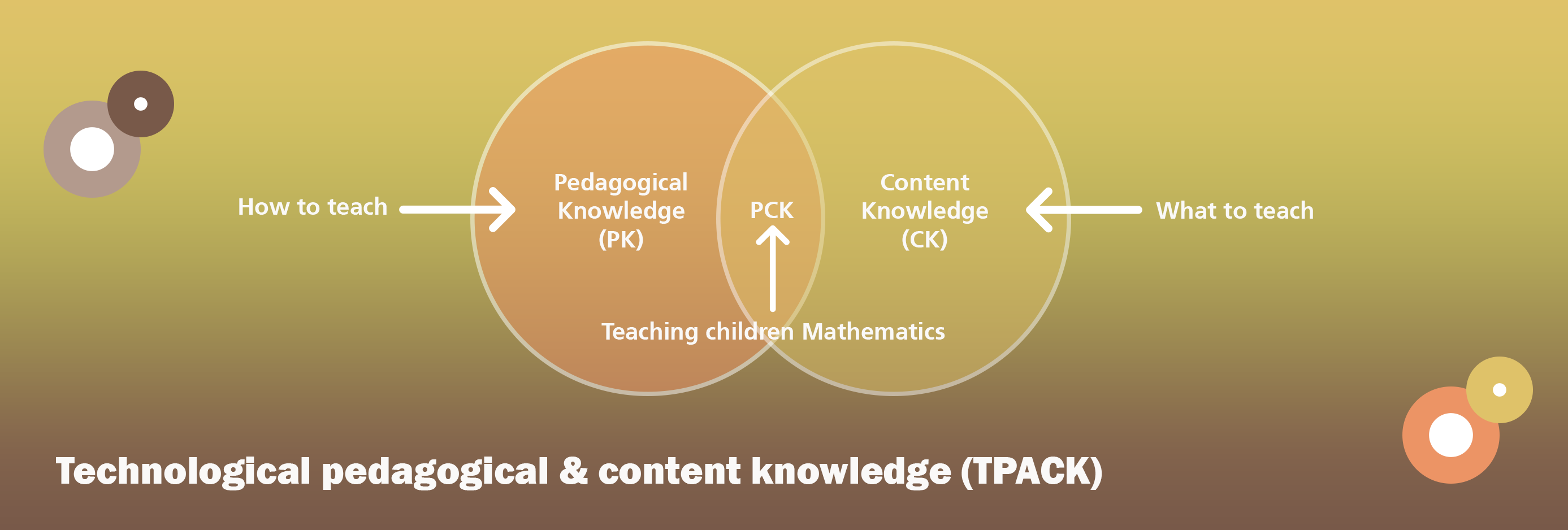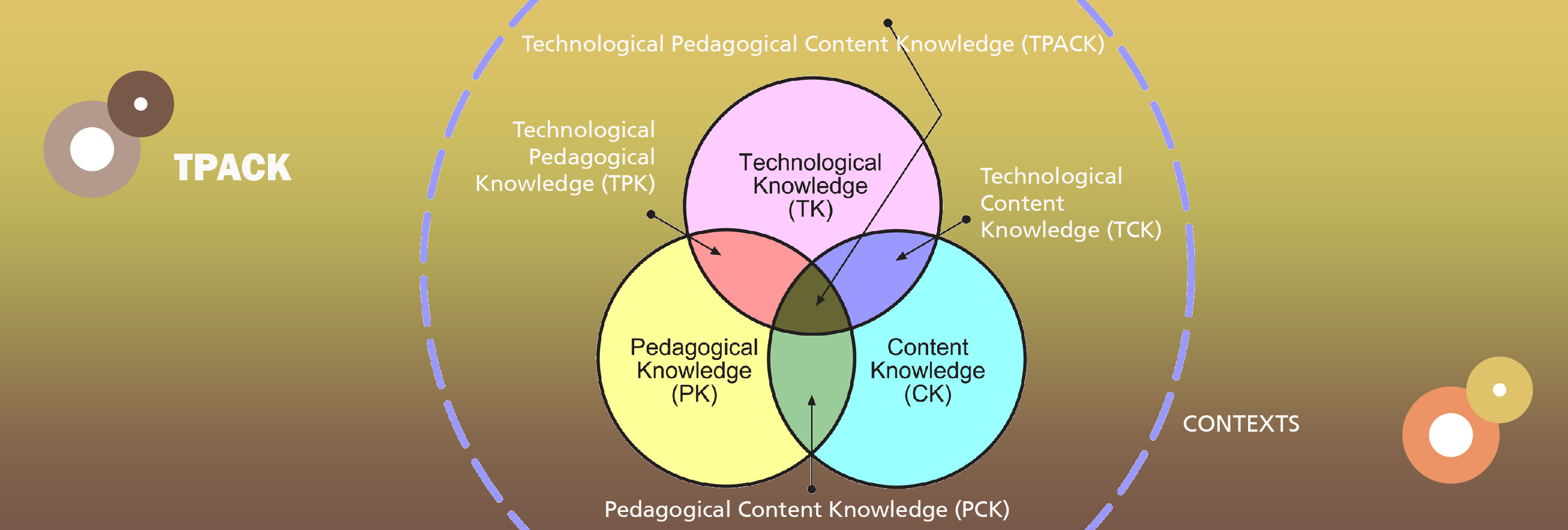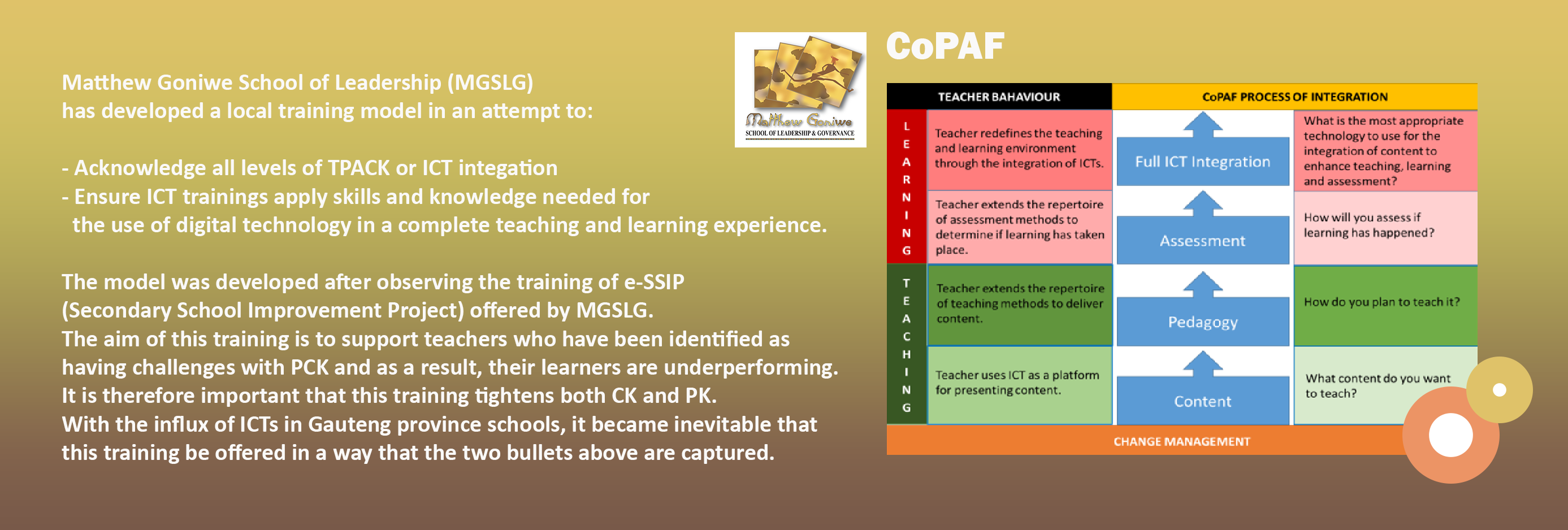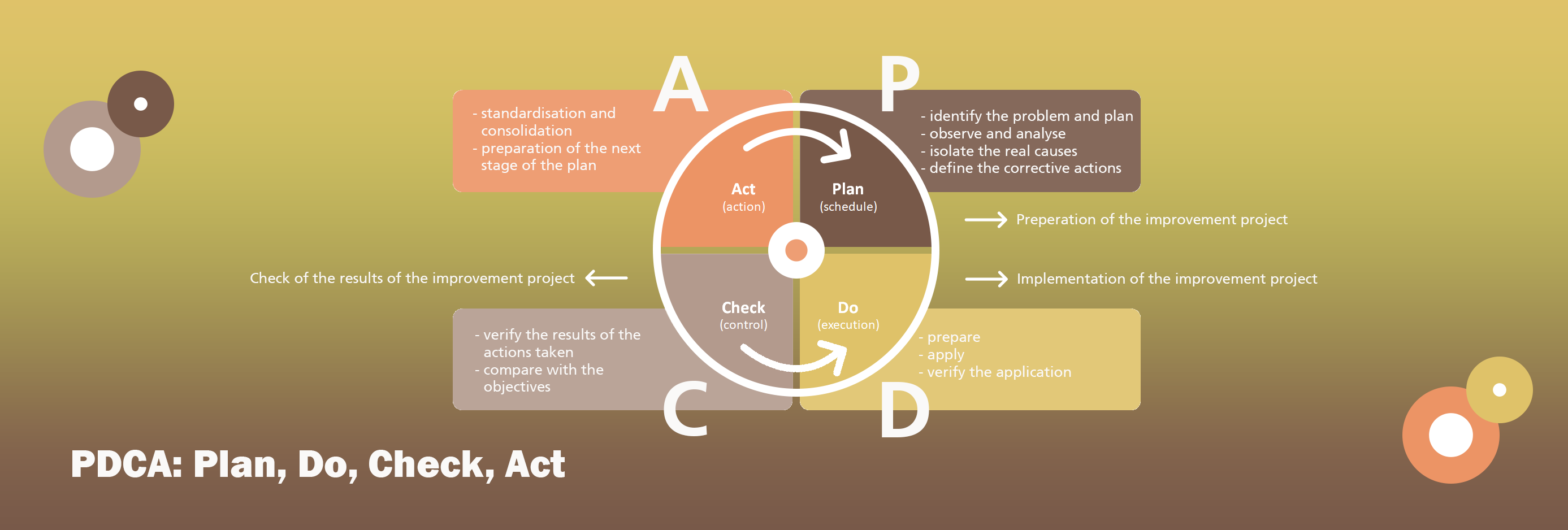General


The aim of this module is to engage with selected frameworks that help in establishing our understanding of what ICT in education entails.
By the end of this module, participants should be able to:
Review the module 3 resources below.
In our understanding of what ICT pedagogical integration is, we were made to realise the importance of the role of the teacher in engineering the experience that brings about learning in any classroom. Schulman (1986) in his famous paper, ‘Those Who Understand: Knowledge Growth in Teaching’, describes the knowledge teachers have and use to teach. He refers to this as Pedagogical Content knowledge (PCK) illustrated and simplified below:

As a class discuss the following using the forum tool below:
Post at least one comment and two replies.
You must remember that a weak PCK does not translate
to a weak content knowledge (CK) or pedagogical knowledge (PK), but can be a
combination of both, pedagogical content knowledge (PCK). Both knowledge
domains should be at the desired level of PCK – that which the curriculum
advocates for.
Reflect on the two questions below. Write your answers into your journal below.
How we intervene as subject advisors varies, depending
on the teacher, our preference, our subject structure and the school, etc. The
truth is we can learn more by sharing what our intervention strategies are,
regardless of our contexts.
As a class, discuss the following:
What makes you a proud South African is what you know,
value and are able to do – that which makes you different from any other
teacher in the world. As a South African teacher, what do you need to know
(besides teaching methods) if teaching is to be successful (achieve curriculum
goals)?
In an attempt to make the know-how of using these digital technologies in a teaching context very clear, Koehler and Mishra (2005) use Shulman’s concept of PCK to demonstrate the knowledge domain a teacher must have in order to pedagogically integrate ICTs effectively. The image below illustrates their idea:

You will notice that technology knowledge has been added to PCK, shifting the teaching area to TPACK. This reflects how this powerful technology that has numerous affordances (abilities) can be used in any given teaching and learning experience. Like any technology, users, in this case teachers, need to have knowledge of how to use ICTs for teaching. But before they know HOW to use ICTs for teaching they need to know:
Re-look at the four steps detailed above and arrange them in such a way that the teacher is able to make decisions that are based on educational reasons. These reasons should promote successful learning that can promote the achievement of curriculum goals.
Justify the arrangement of your four steps.
Upload your activity by using the assignment submission tool below.

Consult your course manual for further insight into this model.
One area that does need to be considered is teacher change management. There are some teachers who may resist integrating ICTs into their teaching methods and how do we deal with that?
Below is a change management model currently being used in schools: think about where your role would fit into this model.
Reflect on how and where you can intervene at teacher level to support the school as an organisation in its change management endeavours. Record your reflections in your Journal below.
The PDCA model is a set of four repetitive steps that can be used to control a progressive improvement of processes. In our case, this relates to the enhancement of teaching and learning. Review the model and start thinking about what actions you can take to ensure your teachers implement ICTs effectively.
Using the forum tool below, discuss the following with your colleagues:
At a high level, how would you apply the PDAC to support teachers in the advancement of their integration of ICTs into their teaching?
The CoPAF model presents change management as the foundation for teachers’ utilisation of ICTs in all parts of the model. The following model provides an example of how you can apply the PDAC model to support teachers in the four components of CoPAF at plan level:
Think of a specific teacher who is struggling
with PCK. Give him / her a pseudonym. Describe what exactly the challenge is
with the teacher’s pedagogical content knowledge. State which area of change
management you will focus on, bearing in mind their context. How can you help this
teacher through using CoPAF as your framework?
Record your thoughts in a word document and upload your report using the assignment submission tool below.

Use the link below to access the module 3 synchronous meeting. This online meeting will take place at Date | Time. Note: Your attendance is compulsory.